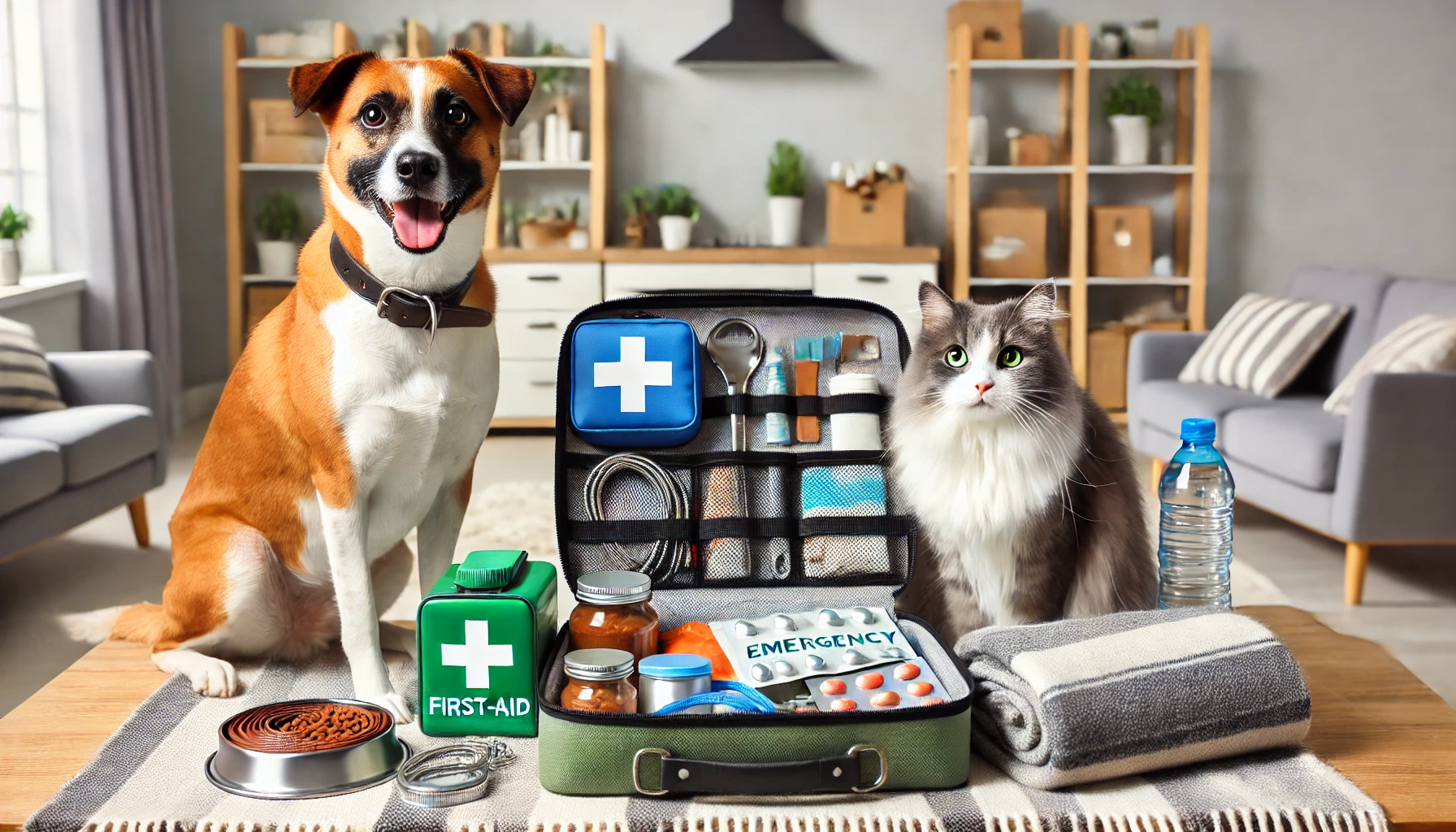Emergencies can strike at any time, and being prepared is essential to protect your pets during unexpected situations. A pet emergency kit is a vital part of your disaster readiness plan, ensuring you can meet your pet’s needs in the event of natural disasters, power outages, or other crises. This guide will help you assemble a comprehensive kit tailored to your pet’s requirements.
Why You Need a Pet Emergency Kit
Emergencies can disrupt access to basic necessities like food, water, and medical care. A pet emergency kit ensures you have everything you need to care for your furry friends until the situation stabilizes.
Benefits of a Pet Emergency Kit
- Quick Response: Allows you to act promptly during evacuations or disasters.
- Peace of Mind: Knowing you’re prepared reduces stress for both you and your pet.
- Essential Supplies: Ensures you have the items needed to keep your pet safe, healthy, and comfortable.
Essential Items for Your Pet Emergency Kit
A well-stocked kit includes food, water, medical supplies, and items for your pet’s comfort.
Food and Water
- Pet Food: Pack a three-to-seven-day supply of your pet’s regular food in airtight containers to prevent spoilage.
- Water: Include enough bottled water for at least three days, accounting for your pet’s size and daily needs.
- Collapsible Bowls: Lightweight and portable bowls make feeding and hydration easy during emergencies.
Identification and Documentation
- ID Tags: Ensure your pet’s collar has up-to-date identification tags with your current contact information.
- Microchip Information: Keep a copy of your pet’s microchip details in the kit.
- Photos: Include recent photos of your pet in case they get lost, making it easier to prove ownership.
- Medical Records: Add vaccination records, prescriptions, and a list of any medical conditions.
First-Aid Supplies
- Bandages and Gauze: For minor injuries or wounds.
- Antiseptic Wipes: To clean cuts or scrapes.
- Tweezers: For removing splinters, ticks, or other foreign objects.
- Pet Thermometer: A pet-specific thermometer to check for fever.
- Medications: Include any current prescriptions with clear instructions.
Comfort Items
- Blanket or Towel: Provides warmth or can be used to wrap your pet during transport.
- Favorite Toy: A familiar item can help reduce anxiety during stressful situations.
- Bed or Mat: If space permits, include a small bed or pad for added comfort.
Sanitation Supplies
- Waste Bags: For cleaning up after your dog during evacuations.
- Portable Litter Box: For cats, along with a small bag of litter.
- Paper Towels: Useful for cleaning messes or spills.
Preparing for Different Types of Emergencies
Different emergencies may require unique preparations.
Natural Disasters
- Flooding: Pack waterproof bags for your pet’s documents and supplies.
- Wildfires: Keep an evacuation kit ready with masks or wet towels to protect your pet from smoke inhalation.
- Earthquakes: Include a flashlight and extra batteries for navigating dark or damaged areas.
Evacuations
- Crate or Carrier: A sturdy, well-ventilated carrier ensures safe transport for cats and small dogs.
- Leash and Harness: For dogs, pack an extra leash and harness in case one gets damaged.
Organizing Your Emergency Kit
An organized kit ensures you can access items quickly during a crisis.
Storage
- Waterproof Containers: Use plastic bins or bags to keep supplies dry.
- Backpack or Duffle Bag: For portability, especially during evacuations.
Labeling
- Clearly label your kit and include an inventory list to ensure nothing is forgotten.
Accessibility
- Store your kit in a location that is easy to reach, such as near an exit or in your vehicle.
Maintaining Your Pet Emergency Kit
Regular maintenance ensures your kit is always ready when needed.
Check Expiration Dates
- Replace food, water, and medications before they expire.
- Update your kit every six months to ensure freshness.
Update Records
- Keep your pet’s vaccination and medical records current.
- Update contact information on ID tags and microchip details as needed.
Restock Supplies
- Replenish items that have been used or damaged.
Training and Preparation
Preparing your pet for emergencies can reduce stress during actual events.
Familiarize Your Pet with the Carrier
- Leave the carrier open in your home and encourage your pet to explore it.
- Reward them with treats for entering the carrier voluntarily.
Practice Evacuations
- Conduct evacuation drills to get your pet used to the process.
- Practice putting on leashes, harnesses, or carrying your pet to simulate an emergency scenario.
Additional Tips for Multi-Pet Homes
If you have multiple pets, customize your kit for each one.
- Separate Supplies: Pack food, water, and medications for each pet in individual containers.
- Individual Carriers: Ensure each pet has their own carrier for safety and comfort.
Why Preparation Matters
Emergencies can happen with little to no warning, making preparation crucial. A well-thought-out pet emergency kit not only saves time during critical moments but also ensures your pet’s safety and well-being.
By assembling and maintaining an emergency kit tailored to your pet’s specific needs, you can face unexpected situations with confidence and peace of mind. Your furry companions depend on you for their care, and with a little preparation, you can protect them when it matters most.

